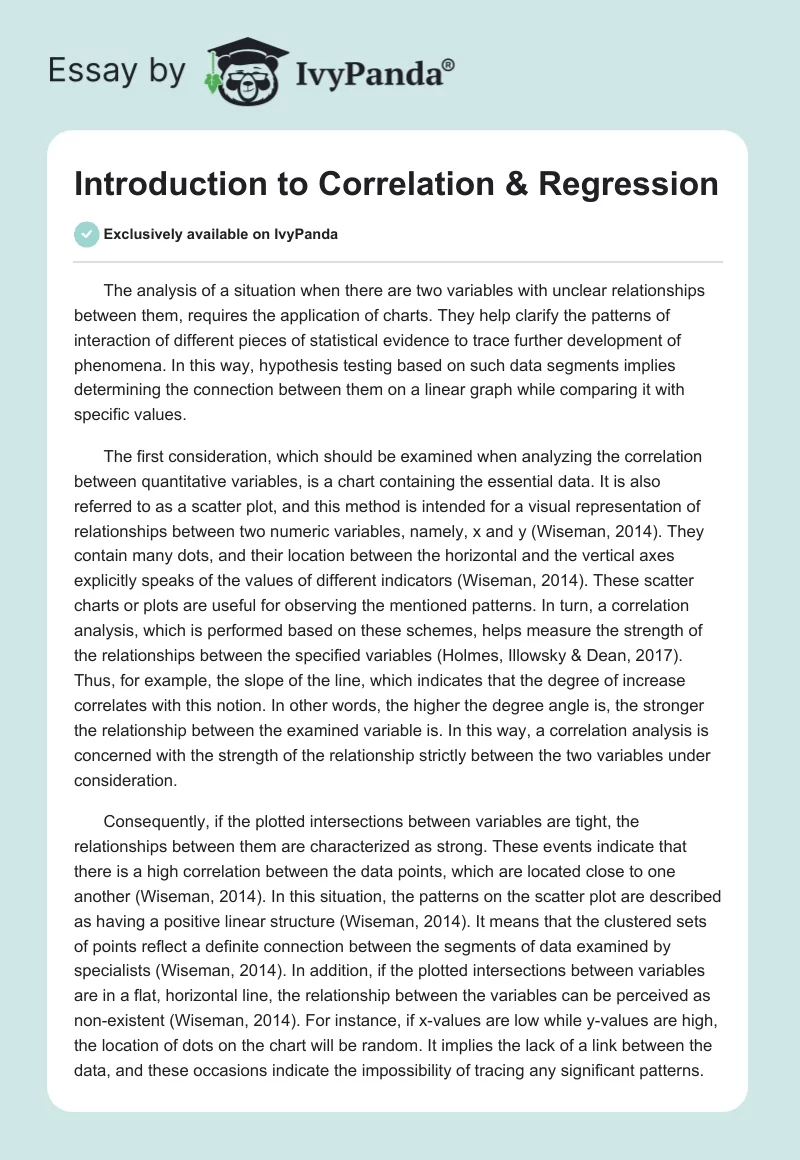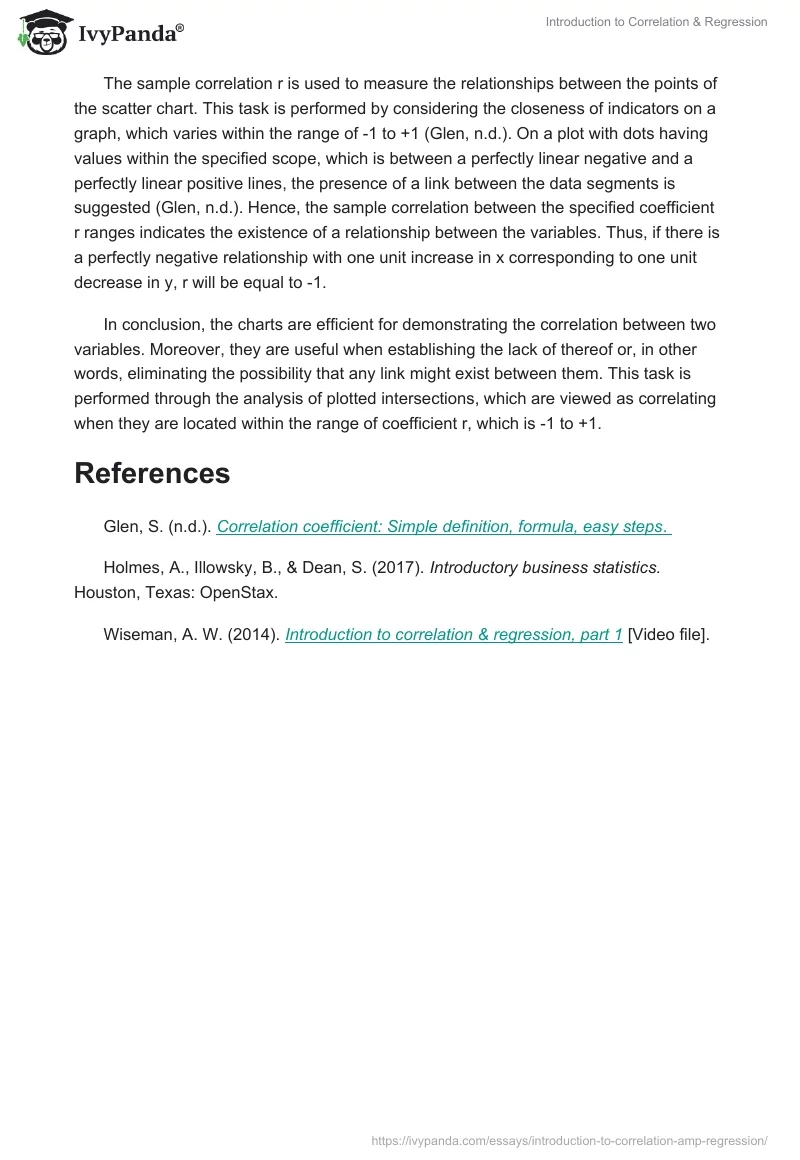The analysis of a situation when there are two variables with unclear relationships between them, requires the application of charts. They help clarify the patterns of interaction of different pieces of statistical evidence to trace further development of phenomena. In this way, hypothesis testing based on such data segments implies determining the connection between them on a linear graph while comparing it with specific values.
The first consideration, which should be examined when analyzing the correlation between quantitative variables, is a chart containing the essential data. It is also referred to as a scatter plot, and this method is intended for a visual representation of relationships between two numeric variables, namely, x and y (Wiseman, 2014). They contain many dots, and their location between the horizontal and the vertical axes explicitly speaks of the values of different indicators (Wiseman, 2014). These scatter charts or plots are useful for observing the mentioned patterns. In turn, a correlation analysis, which is performed based on these schemes, helps measure the strength of the relationships between the specified variables (Holmes, Illowsky & Dean, 2017). Thus, for example, the slope of the line, which indicates that the degree of increase correlates with this notion. In other words, the higher the degree angle is, the stronger the relationship between the examined variable is. In this way, a correlation analysis is concerned with the strength of the relationship strictly between the two variables under consideration.
Consequently, if the plotted intersections between variables are tight, the relationships between them are characterized as strong. These events indicate that there is a high correlation between the data points, which are located close to one another (Wiseman, 2014). In this situation, the patterns on the scatter plot are described as having a positive linear structure (Wiseman, 2014). It means that the clustered sets of points reflect a definite connection between the segments of data examined by specialists (Wiseman, 2014). In addition, if the plotted intersections between variables are in a flat, horizontal line, the relationship between the variables can be perceived as non-existent (Wiseman, 2014). For instance, if x-values are low while y-values are high, the location of dots on the chart will be random. It implies the lack of a link between the data, and these occasions indicate the impossibility of tracing any significant patterns.
The sample correlation r is used to measure the relationships between the points of the scatter chart. This task is performed by considering the closeness of indicators on a graph, which varies within the range of -1 to +1 (Glen, n.d.). On a plot with dots having values within the specified scope, which is between a perfectly linear negative and a perfectly linear positive lines, the presence of a link between the data segments is suggested (Glen, n.d.). Hence, the sample correlation between the specified coefficient r ranges indicates the existence of a relationship between the variables. Thus, if there is a perfectly negative relationship with one unit increase in x corresponding to one unit decrease in y, r will be equal to -1.
In conclusion, the charts are efficient for demonstrating the correlation between two variables. Moreover, they are useful when establishing the lack of thereof or, in other words, eliminating the possibility that any link might exist between them. This task is performed through the analysis of plotted intersections, which are viewed as correlating when they are located within the range of coefficient r, which is -1 to +1.
References
Glen, S. (n.d.).Correlation coefficient: Simple definition, formula, easy steps.
Holmes, A., Illowsky, B., & Dean, S. (2017). Introductory business statistics. Houston, Texas: OpenStax.
Wiseman, A. W. (2014). Introduction to correlation & regression, part 1 [Video file].


